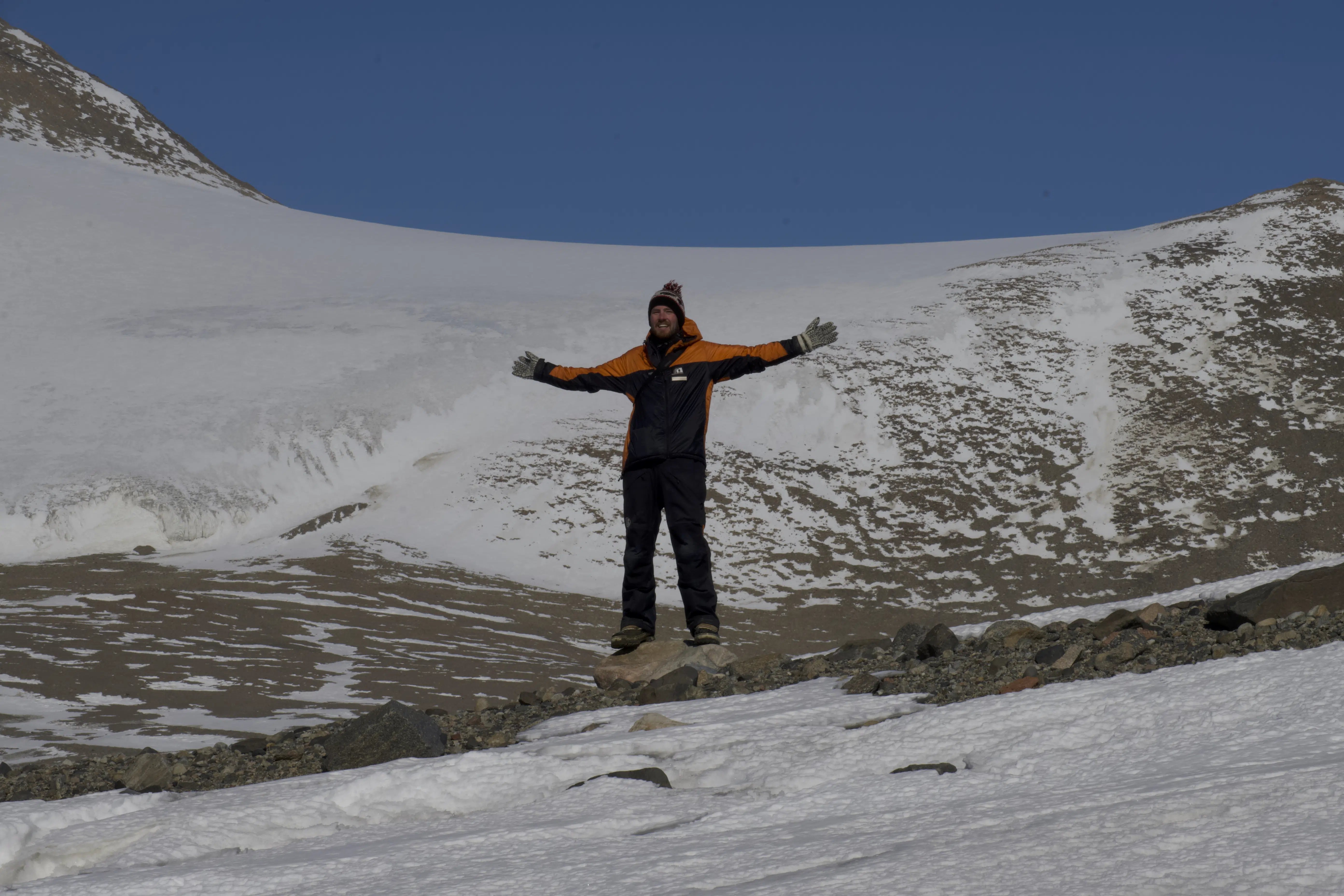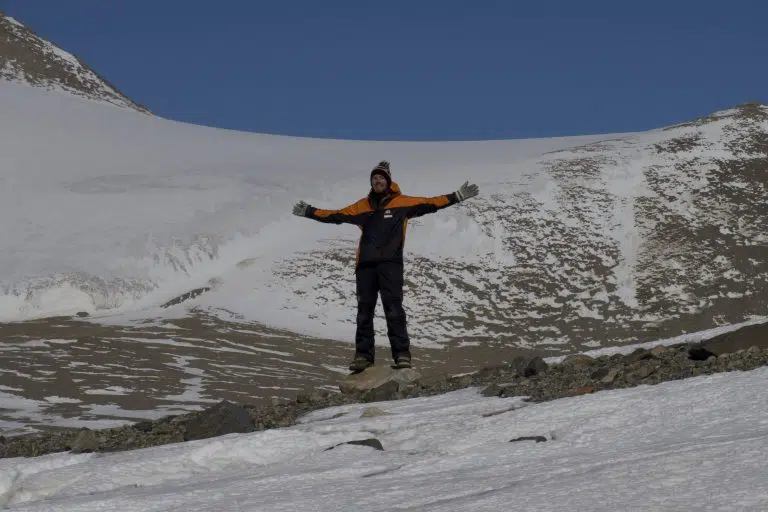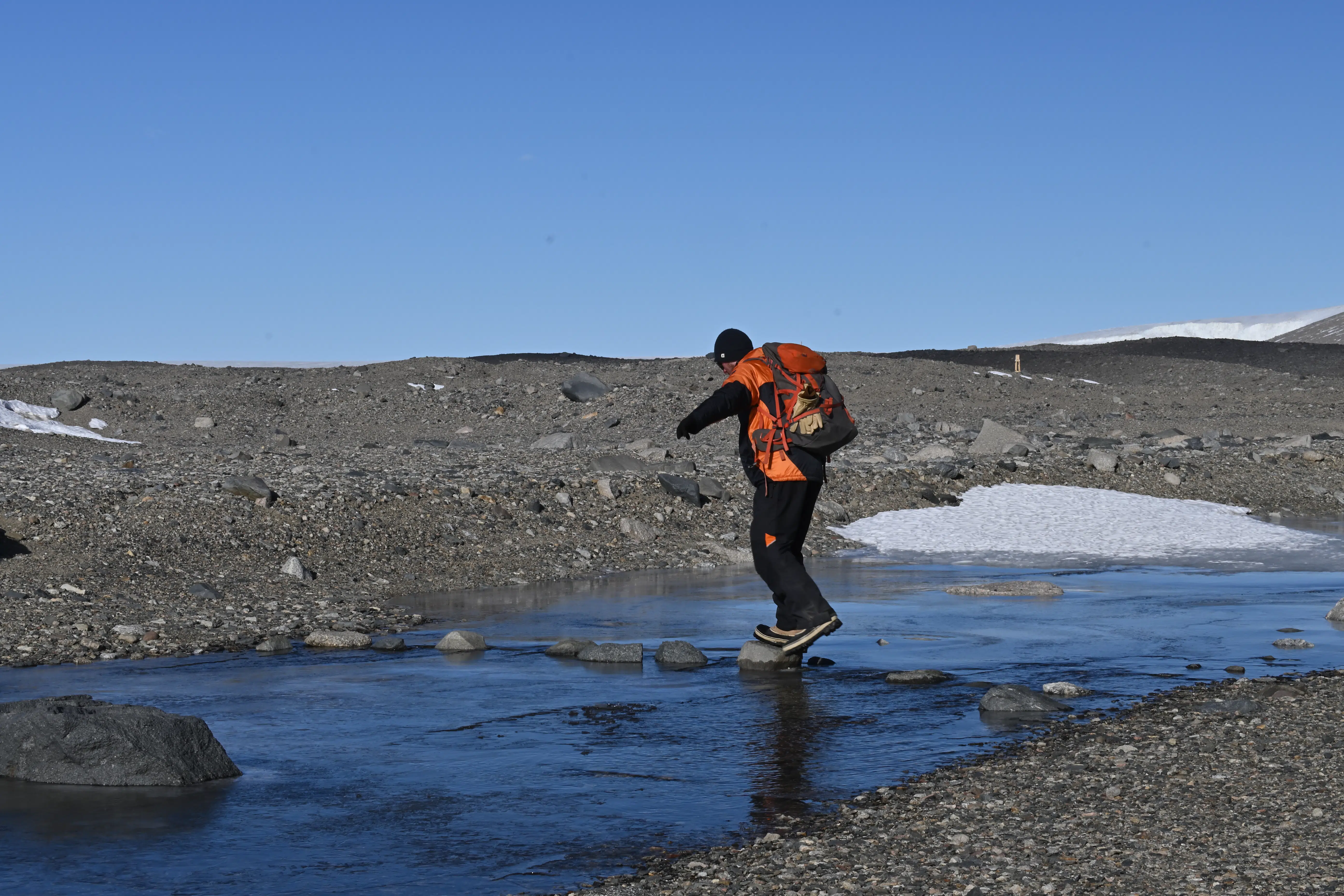Jack Beagley (25), 2021 BLAKE Antarctic Ambassador writes of his time in the Dry Valleys of Antarctica with some of the world’s leading researchers in tracking climatic changes through melting permafrost, and reflects on the scale of the challenges we face and how we can connect as a collective to make a difference.
“The time I spent in the Dry Valleys of Antarctica was arduous yet very rewarding. We were walking up to 20km each day, a significant portion of which with 30 kilograms of equipment on our back. We experienced a range of temperatures and weather, between -15C and 0C and snowstorms to clear blue skies…It was fascinating and reassuring spending time in the field with a group of highly esteemed researchers. Knowing that such capable, venerable people are working hard on questions concerning the wellbeing of our planet and on what the future entails brings me hope and I think we should all listen to what they have to say”
I have just returned from Antarctica where I was walking 15-20km every day over loose soil, carrying 30 kilogram backpacks, enduring constant daylight and not showering for three weeks straight. I was selected as an ambassador for BLAKE NZ, working with experienced scientists on a joint project between GNS Science from New Zealand and its Italian counterpart, INGV. The world leading researchers in this project have found areas in Antarctica that are emitting abnormally high amounts of greenhouse gases as the frozen ground thaws. Similar processes are occurring in the Northern Hemisphere where the volume of stored gas is estimated to be double that which human activities have contributed to the atmosphere since the start of the industrial revolution.
While the volume of greenhouse gasses coming from Antarctica are currently much less than those from the Northern Hemisphere, they are increasing. It is therefore important to understand the source and mechanisms of their production and estimate what their potential impact might be given their warming effect. This will help set more robust reduction targets and guide policy. These kinds of problems that scientists are studying can seem very abstract and be hard to make sense of due to their vast scale. This can make it hard for individuals to reconcile the size of the problem with the magnitude of actions they need to take in their day-to-day lives. This disconnect is exemplified by some sentiments towards climate change, where some people display apathy or even a complete lack of belief. This poses a problem, as the impact we have is the collective impact of individuals and likewise the solution will be in the collective action of individuals.
I believe part of the solution to this disconnect will be in improving the understanding of how scientific findings make their way from places like Antarctica to the media and then into public knowledge. Currently, it’s often the case that results of research are presented without the accompanying methods by which those conclusions were arrived at. I want to provide some insight into those methods for this research and acknowledge that every scientific finding will have been attained through a similar path.
“Being able to work and survive for several weeks in such an environment was a surreal experience. It was incredible stepping out of the tent in the morning and being greeted by a vast glacier immediately in front of the camp site or stumbling upon mummified, thousand year old seals”
In this case, Gary Wilson, Livio Ruggiero and Alessandra Sciarra are leading research of the melting permafrost in the Dry Valleys of Antarctica. The Dry Valleys are a very unique area: despite being surrounded by snow and ice, they are classified as a desert and are the driest region in the world. This makes them one of the few parts of Antarctica not permanently covered by snow or ice, but with exposed ground. Even here, thousands of kilometres away from any big cities, the effects of climate change are being felt. There is significant potential for natural processes, such as melting permafrost to amplify the human contribution to climate change.
The project is being undertaken over multiple years with prior expeditions having mapped the hotspots of gas emissions. Over November and December this summer, we came back to map the ground beneath the valleys and evaluate its electrical properties. These properties allow us to search for any structures beneath the ground that could help explain these hotspots. Whilst research and interpretations are ongoing, a preliminary look at the data suggests that there are salty flows of water under the ground adjacent to the hotspots, providing a lead in explaining the emissions.
In the meantime, we are currently on track for a temperature rise of around 2 degrees by the end of the century which will lead to many negative effects for people around the world. Along the way there will be many tipping points which will be difficult to remedy, such as the melting of Northern Hemisphere (and possibly Antarctic) permafrost and the destabilisation of the West Antarctic Ice Sheet which alone contains enough water for a sea level rise of 3.3 meters. To date the Earth has warmed 1 degree, and the effects are already being experienced around the world. In July, record heatwaves caused many deaths across Western Canada and wildfires caused a loss of forest in Siberia twice the size of New Zealand. More locally, every year we are experiencing increasing numbers of “1 in 100 year” flooding events.
Although the problem of climate change can be vast and overwhelming, you really can be a part of the solution. When you hear facts, theories or claims about climate change, take a moment to consider how their conclusions were attained. For the majority of scientific findings, there will have been experienced specialists, like those on this expedition, who put hard work and rigor into their research. We can leverage these findings and realise that every action in our day-to-day life is an opportunity to reduce your footprint. Starting out with small tweaks, such as reducing meat and dairy consumption, using more public transport (in 2017 transport accounted for 37% of the average NZ household emissions) and even just taking holidays closer to home will make a difference. That being said, it’s also important not to limit the scope of changes that you can make, every extra bit really counts.




